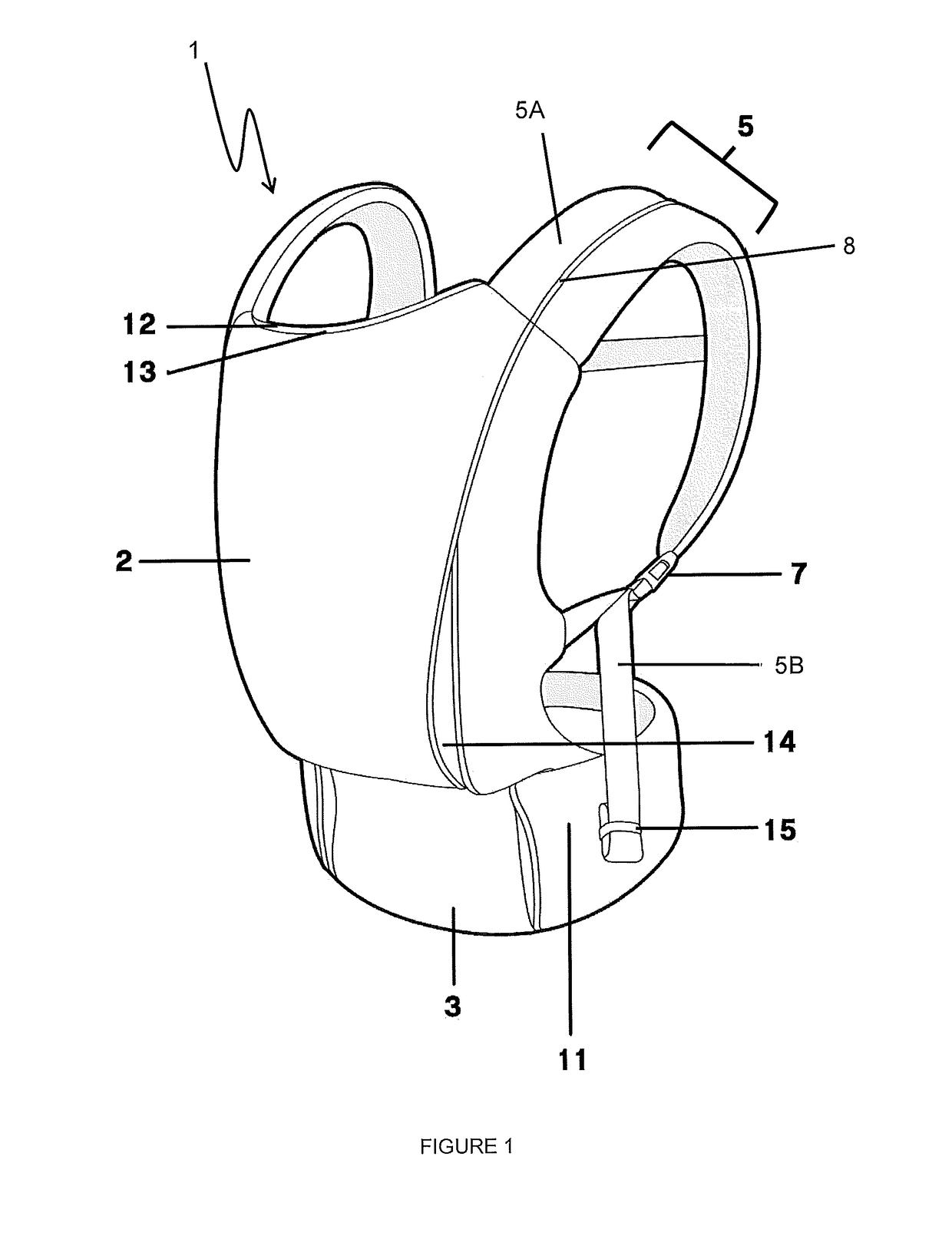A baby carrier
a carrier and baby technology, applied in the field of baby carriers, can solve the problems of not multifunctional, only offering limited modes, and being unable to carry a child, and achieve the effect of adjusting the width of the seat portion and facilitating the connection with the child
- Summary
- Abstract
- Description
- Claims
- Application Information
AI Technical Summary
Benefits of technology
Problems solved by technology
Method used
Image
Examples
working examples
[0119]The above described baby carrier apparatus is now described by reference to specific examples.
example 1
[0120]With reference to FIGS. 1 and 2, a perspective front view and rear view of a baby carrier apparatus 1 respectively is shown that includes two straps or strap loops 5 comprising shoulder strap pads 5A, shoulder adjuster straps 5B, waist band 3 and sternum strap 9. The shoulder strap pads 5A are formed in a smooth continuous curve with a foam insert and the outer fabric pattern is dimensioned to be greater than the 3D mesh inside layer, such that a join line between the materials is located on the bottom third line of the side of the strap (not shown).
[0121]The two strap loops 5 are interconnected via an adjustment means such as a sternum strap 9 and fastener such as a 20 mm buckle 10 best seen in FIG. 2. This allows the wearer to adjust (increase or decrease) the width between the shoulder straps 5. The two strap loops 5 also include a shoulder strap fastener in the form of a 25 mm buckle 7, one on each side of the two strap loops 5 to correspond to the shoulder adjuster strap ...
example 2
Front Inwards Facing (Mode 1)
[0129]With reference to FIGS. 5 and 6, a perspective and plan view respectively is shown of a baby carrier apparatus 1 in front mode where the child faces inwards with respect to the wearer. Also shown is the optional insert 18. This is the recommended position that a newborn or child under 6 months should be carried in (along side the use of the infant insert 18 as shown). In this mode, the seat width is in its widest configuration with the seat domes 17 being fastened in their normal position i.e. on the inside of the waistband 3 on either side of the parents' hip, best seen in FIG. 6.
[0130]The use of the insert 18 is especially important when carrying a newborn or a child in this mode who does not have his own head / neck control (normally under 5-6 months in age) in order to provide optimum ergonomic support. The infant insert 18 provides head and neck support needed for such a young child, which keeps the chin off the chest, leaving the airways clear....
PUM
 Login to View More
Login to View More Abstract
Description
Claims
Application Information
 Login to View More
Login to View More - R&D
- Intellectual Property
- Life Sciences
- Materials
- Tech Scout
- Unparalleled Data Quality
- Higher Quality Content
- 60% Fewer Hallucinations
Browse by: Latest US Patents, China's latest patents, Technical Efficacy Thesaurus, Application Domain, Technology Topic, Popular Technical Reports.
© 2025 PatSnap. All rights reserved.Legal|Privacy policy|Modern Slavery Act Transparency Statement|Sitemap|About US| Contact US: help@patsnap.com



